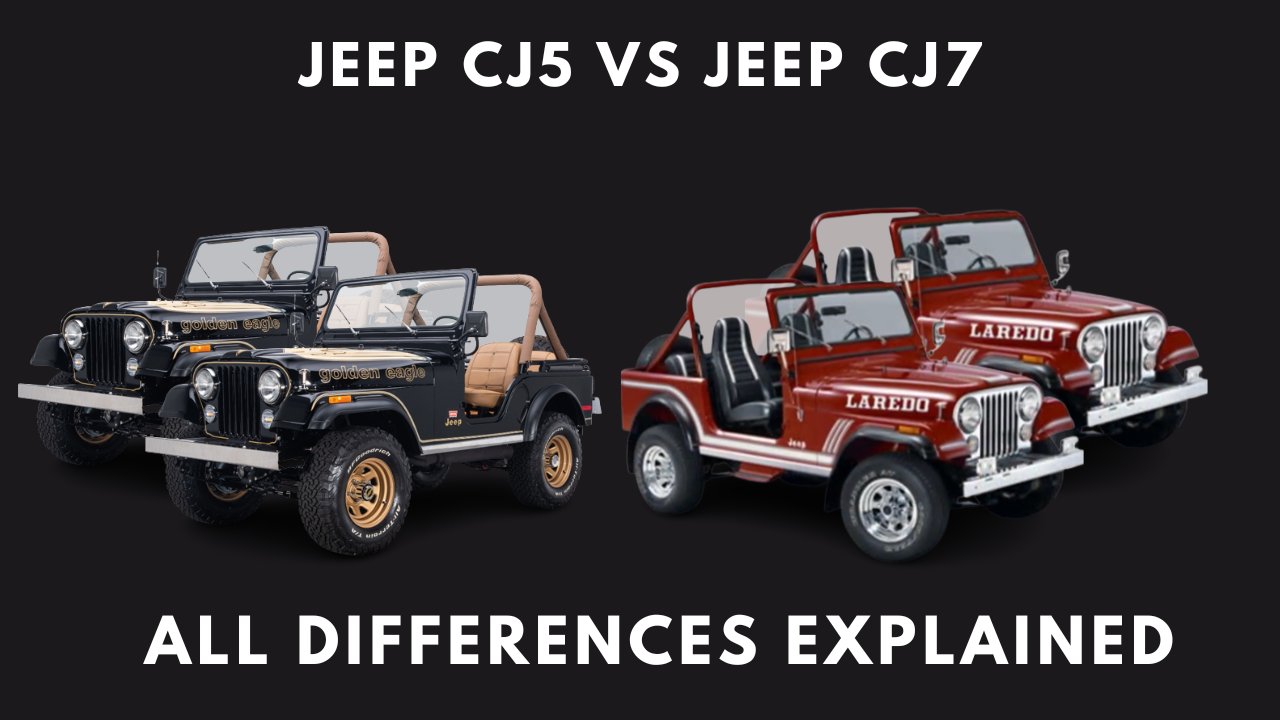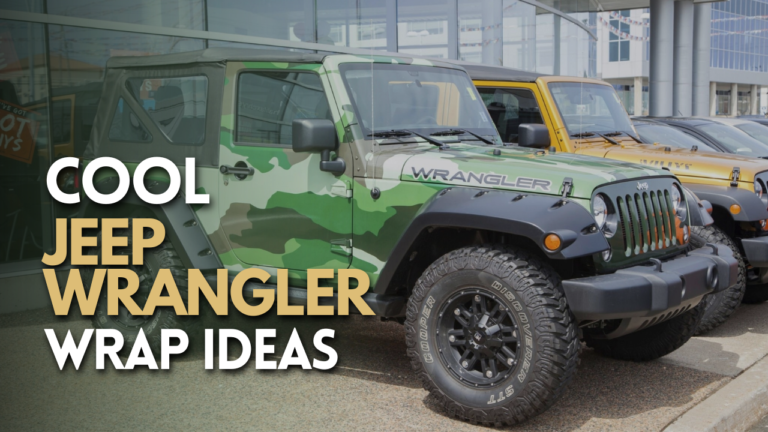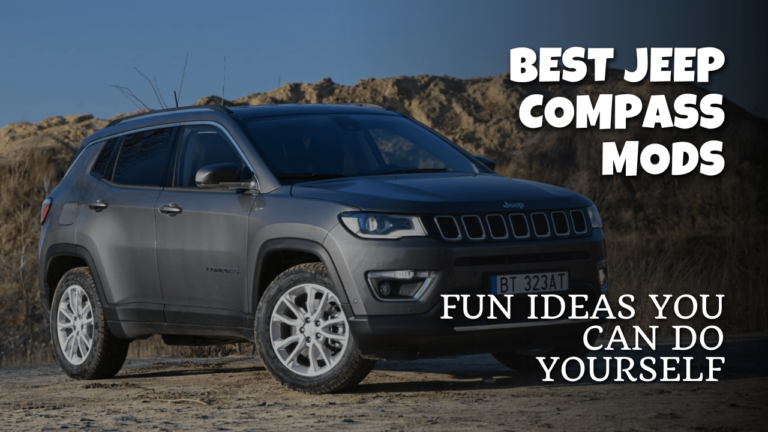Jeep CJ5 Vs. CJ7 – All Differences Explained
The CJ5 and CJ7 models are some of the most iconic vehicles Jeep has ever made.
The CJ models opened Jeep to the broader population as they were specifically marketed as Civilian Jeeps (CJ) with the same military-grade durability and off-road capabilities associated with earlier models such as the CJ3b.
CJ5s and CJ7s are still in high demand, especially with people getting into off-roading and wanting a capable vehicle. Choosing between the CJ5 and CJ7 can be difficult, so here is everything you need to know about these two models.
Wheelbase And Size
To the untrained eye, the CJ5 and CJ7 look very similar, and many can’t tell them apart. One of the main differences between the vehicles is their size, which greatly affects their overall drivability and off-road capabilities.
CJ5 is the shorter variant with a wheelbase of 83 inches, while the CJ7 has a wheelbase of 93 inches—they are both two-door models.
The CJ5 is also slightly wider at 68 inches, whereas the CJ7 is 65 inches wide.
The CJ5 stands 66 inches tall, and the CJ7 stands 70 inches tall.
The CJ5 is short and stout, while the CJ7 is taller, leaner, and has a larger footprint.
One important thing to note is that the CJ7 has considerably more cabin space and legroom thanks to the longer chassis. The engine bay is also longer, so it’s possible to put larger displacement engines in the CJ7.
Most people buying these vehicles today will be interested in upgrading them from their original form. Having the extra space on the chassis makes it much easier to add on newer, bigger parts.
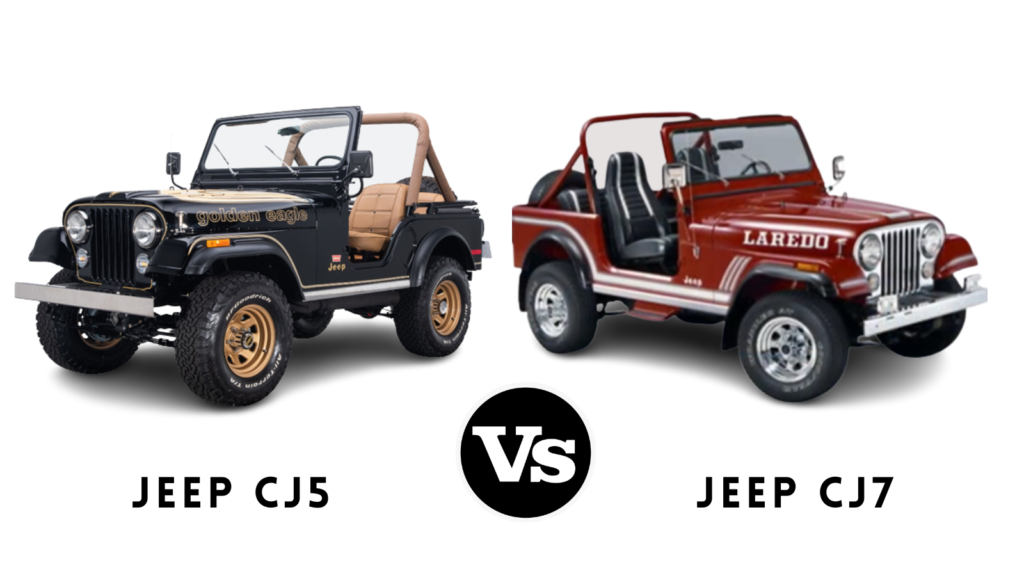
Transmission
CJ5 comes with a manual transmission. The earlier models had manual transmissions, which were 3, 4, or 5-speed. This was the Brog and Warner T4 and T5 system for the 4-speed and 5-speed transmissions, and the 3-speed was the Brog and Warner T150.
One of the big changes with the CJ7 was the introduction of the automatic transmission and the proprietary ‘Quadra-Trac’ system. The quadra-trac system was the early version of what we refer to today as a full-time 4WD system.
The CJ7 had three automatic transmissions, depending on the engine installed. All were 3-forward transmissions. These included the Tremec T-150, TF-999, and TF-904.
Engine
Even though the CJ series was designed and marketed as a Jeep for civilian use, it was still primarily a flexible work machine designed for ranches, farms, and commercial applications.
The chassis and the machine’s overall design were made to adapt to various situations and be used as a work machine rather than a vehicle. For this reason, the CJ Jeep came with numerous engine options.
These ranged from inline fours to full-sized V8s.
The CJ5 was available with:
- Inline 4 cylinder 2.2L
- I4 3.1L(diesel)
- I4 2.5L
- 3.7L V6
- 3.8L I6
- 4.2L I6
- 5.0L V8
The CJ7 was available with:
- 2.4L I4 Diesel
- AMC I4 2.5L
- Hurricane I4 2.5L
- 3.8L I6
- 4.2L I6
- 5.0L V8
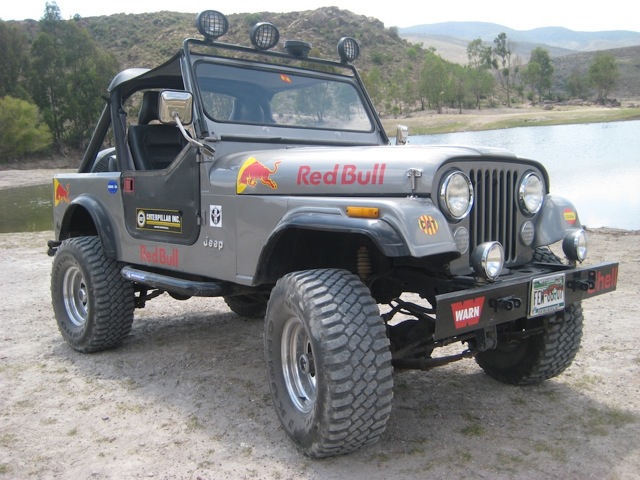
During the days of the CJ5 and CJ7, it was not uncommon for automobile manufacturers to use engines designed and built by other companies.
The CJ vehicles were equipped with engines made by Isuzu, AMC (later bought by Chrysler), Willys, Perkins, and GM.
Suspension
Being tough off-roaders and work vehicles, it only made sense for these Jeeps to have solid axles and leaf-sprung suspension systems.
AMC made the axles, and other than the size, the axles of the CJ5 and CJ7 are identical. These are paired with under-axle leafs in the front and rear.
The CJ5 and CJ7 were not designed to be the most comfortable vehicles to drive; instead, they are built to handle extremely tough terrain and can easily carry a lot of weight in towing applications.
Brakes
The CJ5 uses drum brakes all around.
They are not the best brakes, especially in difficult off-road conditions or if the vehicle is loaded with a lot of weight. The manufacturers noticed this, and the CJ7 was subsequently upgraded with disc brakes in the front and drum brakes in the rear.
Steering
The CJ5 drives a little like a tractor due to the manual steering. Even the early models of the CJ7 received manual steering columns. However, the CJ7 was later upgraded with a hydraulic power steering system.

Creature Comforts
CJs were never meant to be driven at high speed like regular cars or exposed to freeway conditions. They lack many amenities like airbags, power windows, and a basic stereo system.
Most people going offroad aren’t looking for creature comforts, and CJs are mostly barebone. Even the seatbelts don’t retract; they are more like straps than seatbelts.
If you plan on serious off-roading with these vehicles, it would be wise to invest in safety upgrades. You can also add in extra comforts like power windows.
Final Thoughts
CJs are extremely durable; even several decades after a CJ is produced, it still sells well and is extremely popular. They are not cheap vehicles, and finding one in good condition can be hard.
Luckily, the global fan base allows after-market parts and accessories to be easily available. The parts are not cheap, but they are all extremely well-built, much like the car, and will easily last a long time.
If you consider buying a CJ, you will be hard-pressed to find one in pristine condition. You will most likely have to get one and spend some time getting it back into usable condition.
You can find fully-restored CJs if you are willing to spend the money.

